- | 7:00 pm
Ford’s new vision for Lincoln is a sleek EV, almost as long as a limo
The first concept released under Ford’s new design chief is a luxe electric vehicle that’s the longest Lincoln ever made, and which unfolds when you want to get in.

It’s two-thirds the length of a limo. The floor is a digital screen. And instead of doors, the entire back of the vehicle blossoms open like a flower when you climb in.
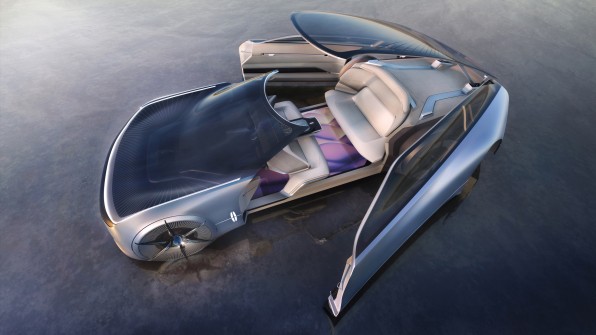
This is the Lincoln Model L100 concept, Ford’s big bet on reinvigorating its sleepy luxury brand 100 years after acquiring Lincoln. As the first concept created with the input of Anthony Lo, Ford’s new chief design officer, who was hired in 2021, the vehicle will almost certainly never be released. Yet it demonstrates Lincoln’s evolving point of view, and how the dusty brand is strategizing to compete in a luxury vehicle market that will soon be defined by electrification and self-driving vehicles.
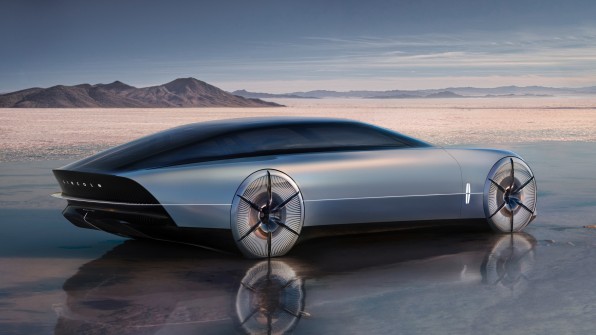
“If you think about private jets or luxury trains in the past, you really indulge in the travel. And the travel becomes rewarding,” says Kemal Curic, the global design director of Lincoln. “We thought, What is the space that’s needed . . . to create this personal sanctuary?”
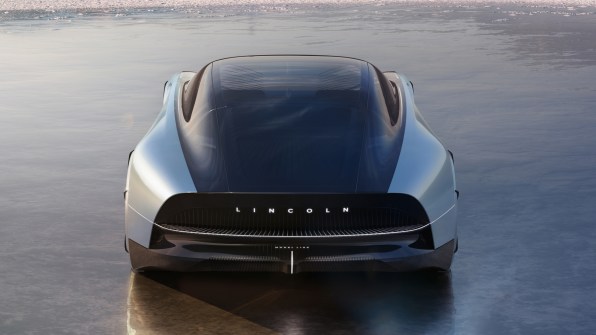
While Lincoln was the U.S.’s top-selling luxury car brand of the late ’90s, the decades have been rougher since, as Lincoln slowly lost its market share to overseas competitors and crossovers; grand cars like Lincolns feel like a dusty artifact from an era of ultra-cheap gas. Today, America’s luxury car market—once defined by ornately decorated, hulking vehicles that chugged gas—is dominated by Tesla’s line of streamlined electric cars.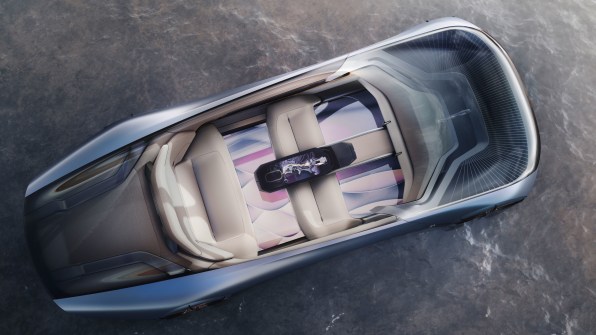
These shifts led Lincoln to push into China in 2014, where it’s since gained a notable foothold, thanks to its Corsair crossover. As of last year, Lincoln sold more cars in China than in the U.S., while Ford opted to go all in with trucks and crossovers in the U.S. But as Lincoln is promising a full fleet of electric vehicles by 2030, removing combustion engines allows designers the opportunity to rethink almost every element of the vehicle, and who may want to buy one.“With a solid state battery pack, we can really reimagine luxury travel,” says Curic.
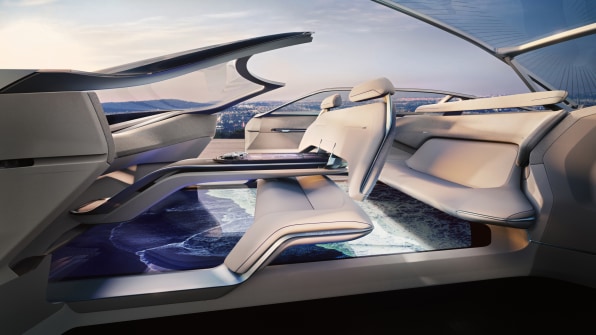
THE LINCOLN MODEL L100 INTERIOR: “PERSONAL SANCTUARY”
To reimagine the sensation of luxury travel, designers started thinking about the experience inside the vehicle rather than outside. As Curic explains, they wanted to construct a properly opulent “personal sanctuary” cabin, and its proportions are what pushed the L100 to its gargantuan proportions.
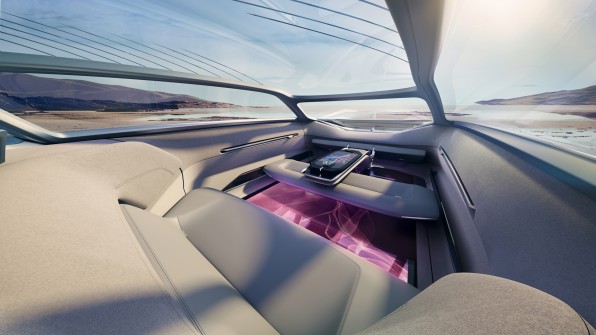
The entire vision of the L100 hinges on us achieving a fully autonomous future. As of last year, even Tesla admitted it might never accomplish that promise. But it’s worth noting that one Ford spokesperson referred to the L100 as a “moonshot,” meaning it’s not intended to look just 5 or even 10 years into future technology, but potentially decades.
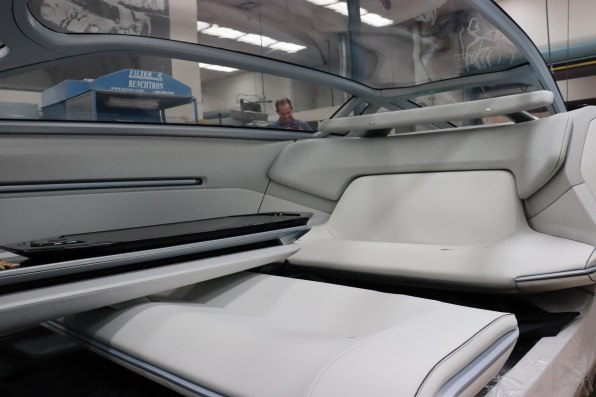
As such, the L100 celebrates the promise of fully functional self-driving much like other future-looking car concepts, featuring seats that can turn inward to face one another when the car is driving itself (which, according to Curic, would be a vast majority of the time). When two people ride alone, however, he imagines they’d opt to sit in the back “king and queen seats,” as if being chauffeured.
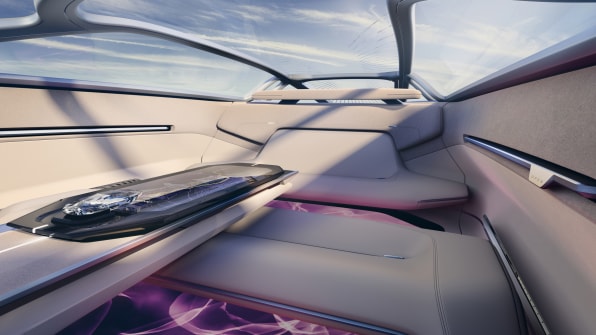
These seats float above the floor in a dramatic effect born from the fact that the entire bottom is a screen, creating similar effects to those seen in the opening ceremony for Beijing’s 2022 Winter Games at National Stadium. But the experience is hardly all screens. Much of the L100’s walls and ceiling are actually glass with an adjustable opacity, offering generous views when you want them and privacy when you don’t.
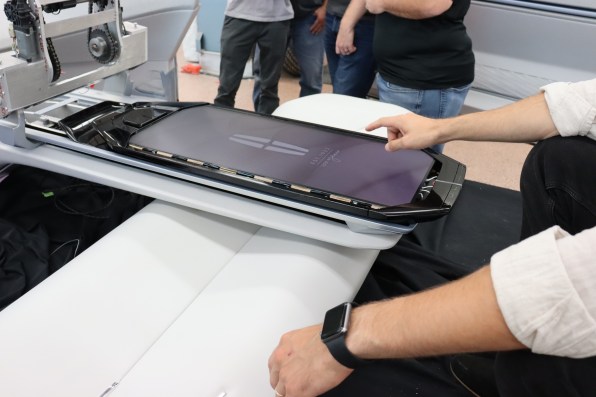
To control the vehicle, there is no wheel or tablet shoved into the console. Instead, a digital map sits amid riders like a board game, and you place a crystal “chess piece” of the vehicle on where you want to go. It’s an intentionally ornate touchpoint to bring premium tactility to an otherwise digital UI. (For the moments you’d like to drive, you’d grab this piece and dock it in the driver’s seat area, where you could direct the car forward, backward, left, and right with assistance from its self-driving sensors.)“If you compare it to autopilot in an airplane, the most enjoyable part to the pilot is taking off and landing,” says Curic. “It’s the same idea here.”
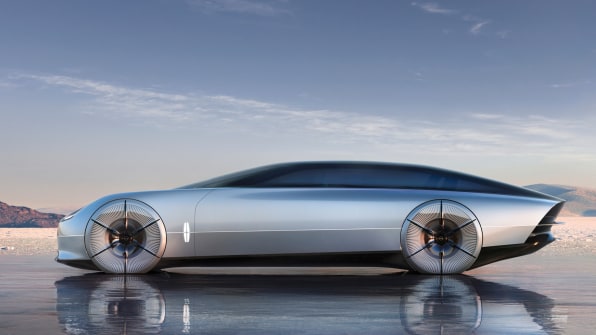
THE LINCOLN MODEL L100 EXTERIOR: DRAMATIC SILHOUETTE INFORMED BY AERODYNAMICS
Meanwhile, the outside of the L100 stretches more than 20 feet long. It’s long, but paradoxically not as long as its proportions might make it appear. While it’s the lengthiest Lincoln ever, its front end (which needs no combustion engine inside) is actually the shortest in the brand’s history. 85% of the vehicle is dedicated to the passenger space versus 60% in today’s vehicles.
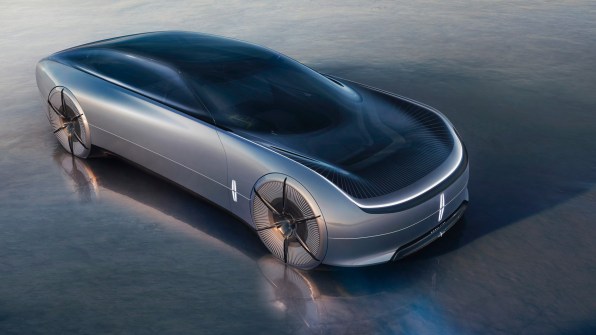
Its dramatic silhouette is completely informed by aerodynamics, claims Curic, right down to its covered wheels which prevent air from catching in the wheel wells. Much like large cars burn more fuel than little ones, large EVs still burn more electricity than small ones. This size impacts range, cost of ownership, and environmental impact, and so Lincoln’s designers are working to eke out every bit of aerodynamics from the design.
Within these restrictions, the L100’s body still manages to express itself. Instead of typical doors, its back end opens with an opulent mechanical flourish—a touch you might see in a high-end watch, scaled to a car. For those worried about how you might get out in a tight parking spot, I’m told that sensors would monitor how wide the doors could open. But the vehicle is clearly designed more to make a dramatic arrival at a mansion rather than unpacking the family in a crowded Chili’s parking lot.
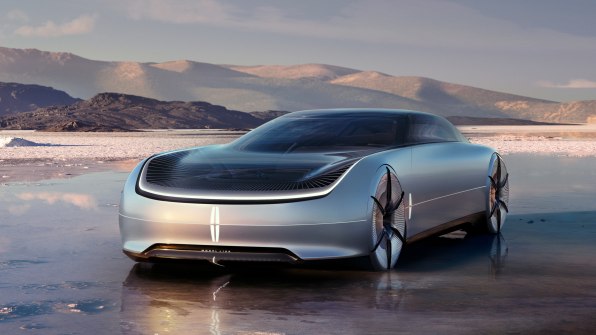
The seamless front end abandons any grill, and instead features Lincoln’s new signature, a glossy black front end that features piano-string lines. (Vehicle nerds may recognize this front end from Lincoln’s Star EV concept, which debuted earlier this year. Paradoxically, while Lincoln released the Star to the public first, Lo tells me its design was actually informed by the L100.)
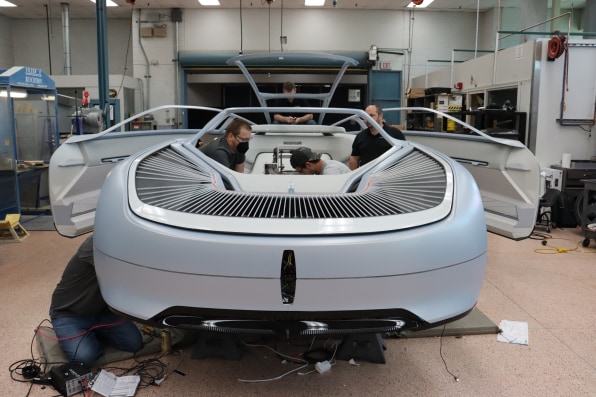
While the glossy black splash makes an eye-catching effect, I can’t help but wonder why the car has a traditional front end at all. Self-driving EVs—especially those meant to tease decades of advancement, like the L100—don’t fundamentally require a long hood since there’s no engine and even no driver. So I ask Curic if Ford and Lincoln really believe that cars of the future will still be designed this way, or if the L100 design is a bit of a fictitious concession to our collective imagination, so that the public will find it intriguing rather than alien or off-putting.

Curic insists that, despite what may be possible with technology in the future, cars will always be defined by their front face.“There’s something with the personality that we don’t want to give up,” he says. “It’s like being human. We all have individual faces and different personalities, and that’s not going to go away.”






































